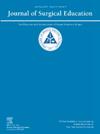Exposure to U.S. Rural Practice During General Surgery Residency: How do Programs Select Sites and Sustain Rural Rotations?
IF 2.1
3区 医学
Q1 EDUCATION, SCIENTIFIC DISCIPLINES
引用次数: 0
Abstract
Objective
Despite the dire need for rural surgeons and increasing interest in exposing residents to rural practice, there remains little systematic information about how programs establish and sustain rural rotations.
Design
A website review (12/2022-7/2023) of the 342 civilian surgery programs listed by the ACGME identified those offering elective or required U.S. rural rotations. In addition, all programs were contacted by email to confirm or deny that they offered rural rotations to account for webpage inaccuracies. The effort identified 81 programs (24%). A qualitative design was then adopted, whereby the first author interviewed 58 general surgery program leaders (72% participation rate) to explore strategies used to arrange and sustain rural rotations. Interviews focused on the 2023-24 academic year, were conducted from August 2023 to August 2024, and were recorded, transcribed, and analyzed collaboratively to discern program strategies.
Results
Programs are more likely to use rural training sites outside their healthcare system (59% or 34/58) than inside (41% or 24/58), but system sites were preferred when available. At both site types, programs drew heavily upon professional ties, primarily to program graduates (64% or 37/58). Alumni were eager to help and knew program traditions and expectations. Their presence also bolstered confidence in the educational value of the rotation. Additional alumni joining rural sites were evidence of rotations as a recruitment pathway, thus fostering sustainable relationships. Within-system rotations were easier to arrange and finance than those outside the system.
Conclusions
The results offer practical insights into how a diverse mix of surgery programs across the U.S. select and sustain required and elective rural rotations in the U.S. The prominence of professional ties to program graduates and healthcare-system links are especially notable. Variability across programs in how they select and sustain sites also suggests that many approaches are feasible.
在普通外科住院医师期间接触美国农村实践:项目如何选择地点并维持农村轮转?
尽管迫切需要农村外科医生,并且越来越多的人对让居民接触农村实践感兴趣,但关于如何建立和维持农村轮转的系统信息仍然很少。DesignA网站回顾了ACGME列出的342个民用外科项目(2022年12月至2023年7月),确定了那些提供选择性或强制性的美国农村轮转的项目。此外,所有项目都通过电子邮件联系,以确认或否认他们提供农村轮转,以解释网页的不准确。这项工作确定了81个项目(24%)。然后采用定性设计,第一作者采访了58名普外科项目负责人(72%的参与率),以探索用于安排和维持农村轮转的策略。访谈集中在2023-24学年,于2023年8月至2024年8月进行,并进行记录,转录和分析,以确定项目策略。结果项目更有可能使用其医疗保健系统外的农村培训地点(59%或34/58),而不是内部(41%或24/58),但如果有的话,系统站点是首选。在这两种站点类型中,项目都严重依赖专业关系,主要是项目毕业生(64%或37/58)。校友们渴望帮助,并且了解项目的传统和期望。他们的存在也增强了人们对轮调的教育价值的信心。更多的校友加入农村地区,证明了轮岗是一种招聘途径,从而促进了可持续的关系。系统内的轮岗比系统外的轮岗更容易安排和资助。结论:研究结果为美国不同的外科项目如何选择和维持必要的和选择性的农村轮转提供了实用的见解。与项目毕业生和医疗保健系统联系的专业联系尤为显著。不同项目在选择和维持地点方面的差异也表明许多方法是可行的。
本文章由计算机程序翻译,如有差异,请以英文原文为准。
求助全文
约1分钟内获得全文
求助全文
来源期刊

Journal of Surgical Education
EDUCATION, SCIENTIFIC DISCIPLINES-SURGERY
CiteScore
5.60
自引率
10.30%
发文量
261
审稿时长
48 days
期刊介绍:
The Journal of Surgical Education (JSE) is dedicated to advancing the field of surgical education through original research. The journal publishes research articles in all surgical disciplines on topics relative to the education of surgical students, residents, and fellows, as well as practicing surgeons. Our readers look to JSE for timely, innovative research findings from the international surgical education community. As the official journal of the Association of Program Directors in Surgery (APDS), JSE publishes the proceedings of the annual APDS meeting held during Surgery Education Week.
 求助内容:
求助内容: 应助结果提醒方式:
应助结果提醒方式:


